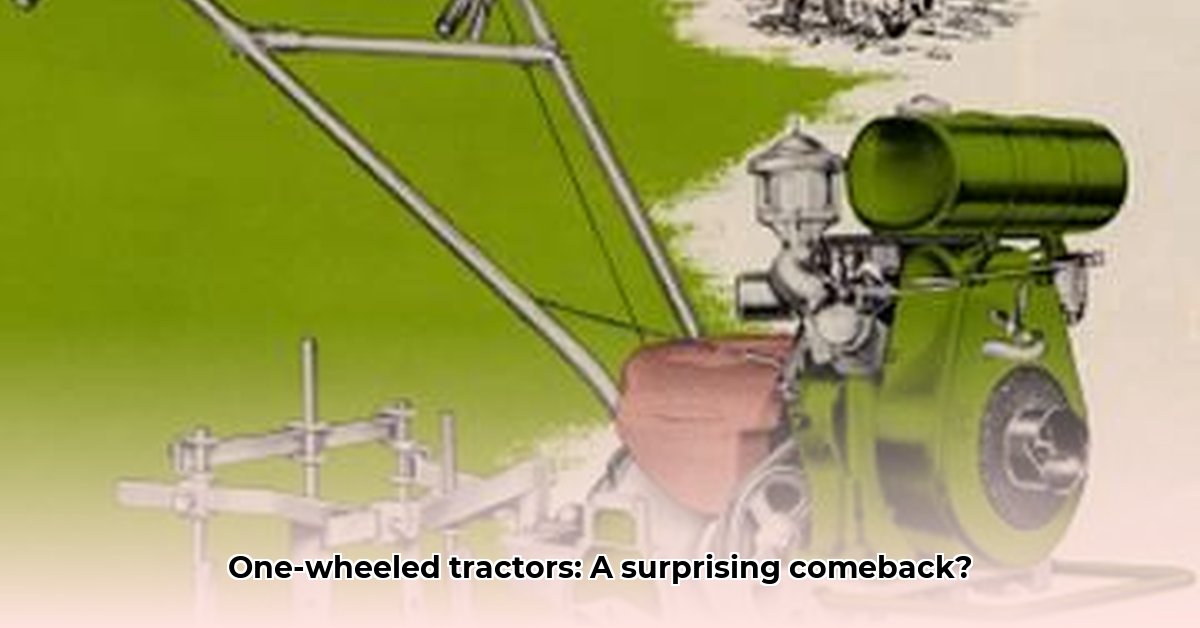
Imagine a tractor, not the hulking behemoths that dominate modern farms, but a nimble, single-wheeled machine. This is the story of the one-wheeled tractor, a quirky invention with a fascinating past, a devoted following, and a surprisingly bright future. From its rise as a practical tool to its decline and surprising resurgence as a collector's item, the journey of the one-wheeled tractor is a compelling tale of innovation, obsolescence, and enduring appeal. For more on vintage tractors, check out this great resource.
The Choremaster's Rise: A Small Wonder in the Farm World
The mid-20th century saw the dominance of large, powerful tractors. Yet, a niche remained: smaller jobs demanding maneuverability. Enter the Choremaster, the most iconic one-wheel tractor. Its single, large wheel and compact design allowed it to navigate tight spaces and smaller plots, proving unexpectedly efficient for small-scale farms and even snow removal. Early sales figures demonstrate its practicality – it wasn't just a novelty; it filled a real need, becoming invaluable to many. How many farmers benefited from the Choremaster's unique design in its heyday? Its agility alone guaranteed a measure of success, but it's the surprising resurgence that truly captivates.
The Fall from Grace: New Technology and Shifting Sands
The Choremaster's reign, however, was short-lived. The introduction of rototillers, offering greater versatility and soil preparation capabilities, marked a turning point. Rototillers could till, aerate, and prepare soil far more effectively than the Choremaster, thus diminishing its practical appeal. Simultaneously, larger agricultural corporations began consolidating, favoring large-scale farming operations that left little room for specialized smaller machines. The Choremaster, a victim of technological advancements and shifting economic scales, eventually ceased production, seemingly destined for obscurity. What specific factors contributed most to the Choremaster's decline? A combination of technological advances and changes in farming practices proved insurmountable.
The Unexpected Resurgence: Collectors Find a Treasure
Yet, the story doesn't end there. The one-wheeled tractor, once a practical tool, transformed into a highly sought-after collector's item. People found themselves captivated by its unique design, rich history, and unusual charm. Collectors like Fred Brown, whose impressive collection highlights the machine's inherent beauty and historical significance, drive this renaissance. This wasn't mere hoarding; it was the preservation of a piece of agricultural heritage. Restored machines began appearing, increasing their value and creating a vibrant collector's market. How has the collector's market influenced the preservation of these machines? The dedication of collectors ensures these pieces of history are not only preserved but also appreciated.
A Future in Sustainable Farming? Reimagining the One-Wheel Wonder
Interest in one-wheel tractors transcends nostalgia. Their compact size and lower horsepower requirements translate to lower fuel consumption and minimal soil disturbance – principles perfectly aligned with sustainable agriculture. Their potential use in urban farming and other small-scale operations where efficiency and environmental consciousness are paramount increases their importance. What are the key challenges to a widespread revival of the one-wheel tractor design? Modernizing the design, navigating regulatory hurdles, and balancing manufacturing costs are significant obstacles.
Bringing the One-Wheel Tractor Back: A Collaborative Effort
A multi-faceted approach is crucial to a successful revival. This requires collaboration among collectors, small-scale farmers, manufacturers, and museums. Key strategies include fostering online communities, initiating parts reproduction projects, conducting market research, developing sustainable models, and creating educational outreach programs that highlight these machines' historical and environmental significance. What specific steps might be taken to enhance the availability of replacement parts? Collaborating with both collectors and manufacturers to potentially revive or re-manufacture original parts could be a key step.
Conclusion: The Enduring Appeal of Simple Ingenuity
The one-wheel tractor’s journey exemplifies the enduring allure of simple ingenuity and the unpredictable nature of history. While its future remains unwritten, its past and present offer a fascinating look at agricultural technology and the power of dedicated communities. This unlikely resurgence might just add many more chapters to its captivating story. The questions remain: Can this simple machine find a place in the future of sustainable agriculture? And will the passionate collectors continue to drive its legacy? Only time will tell.